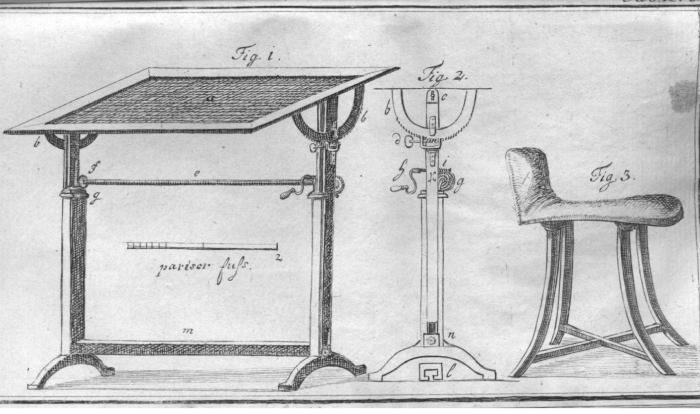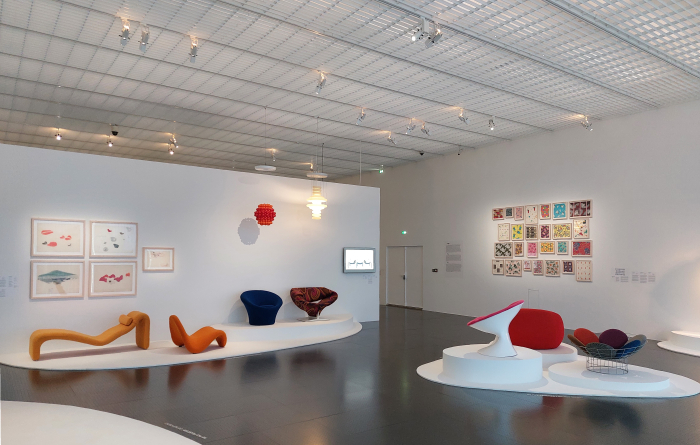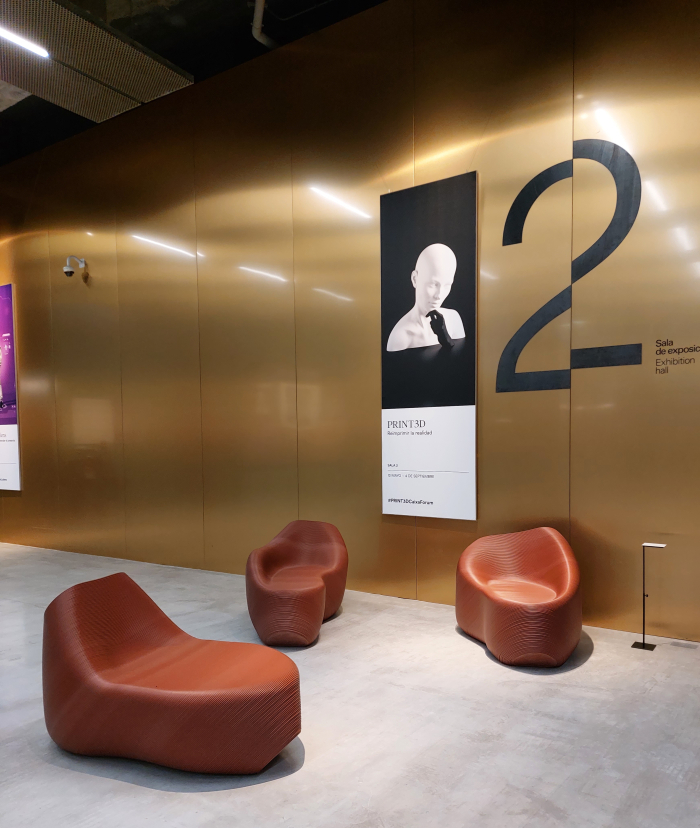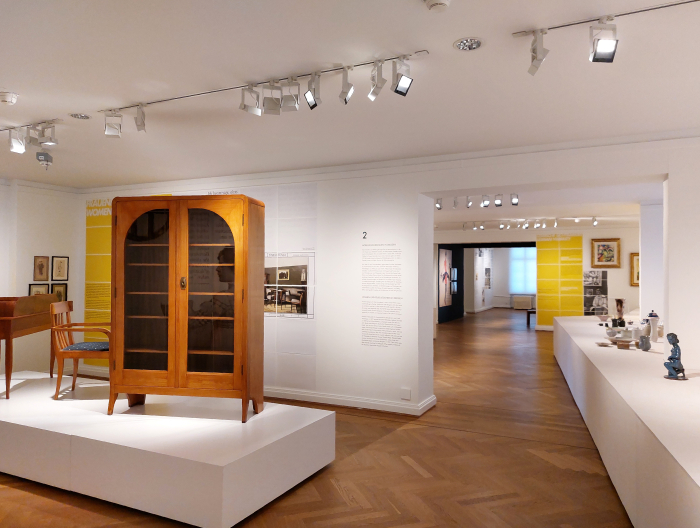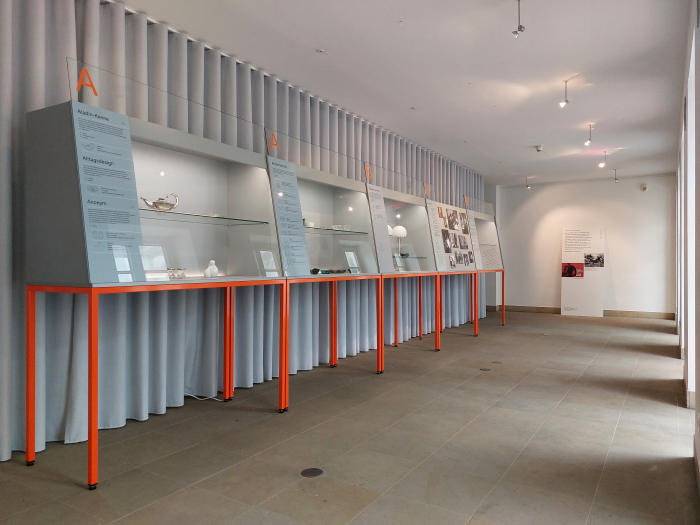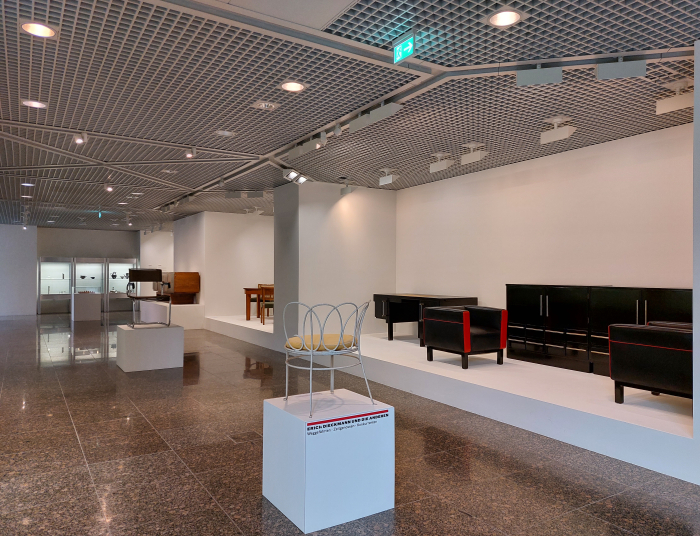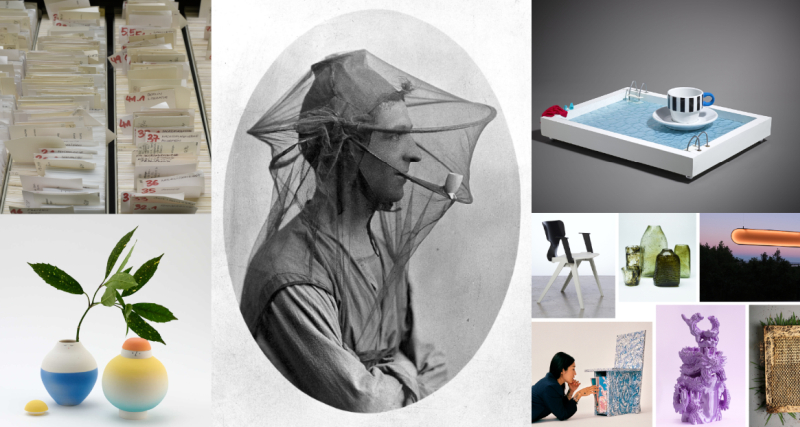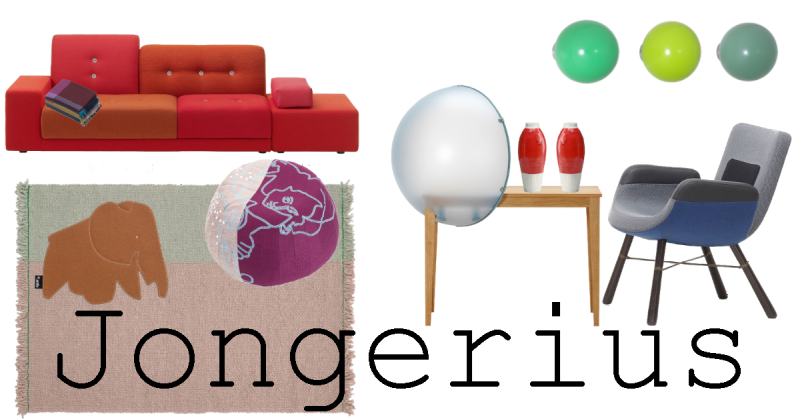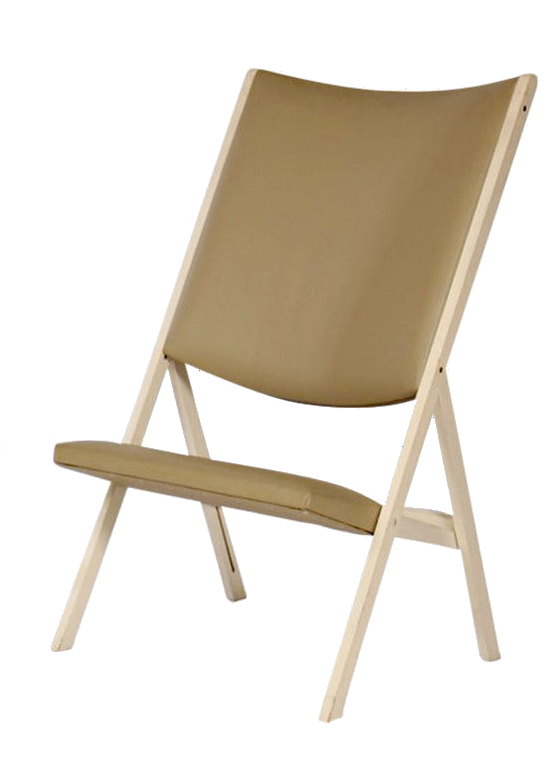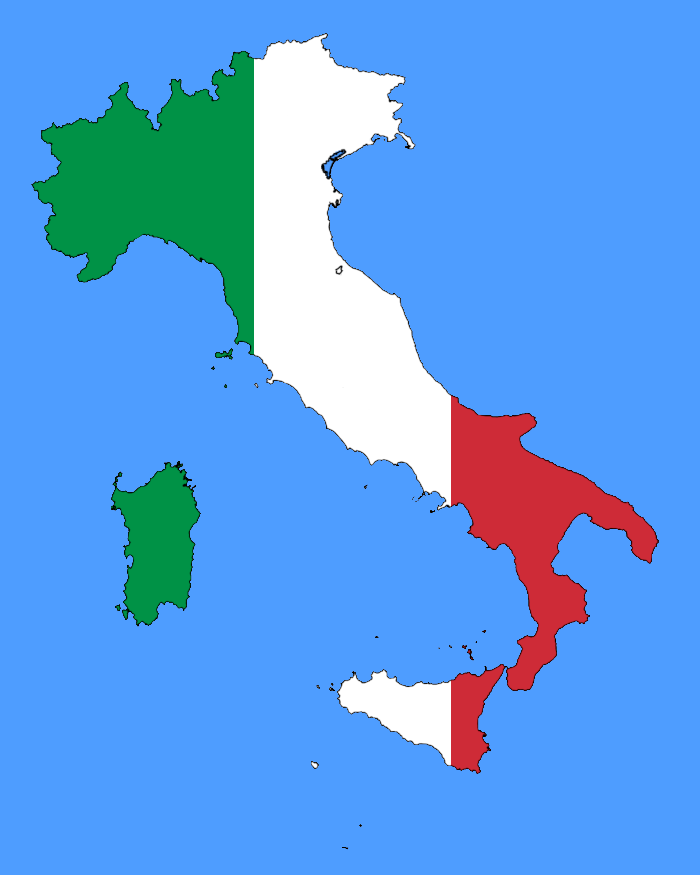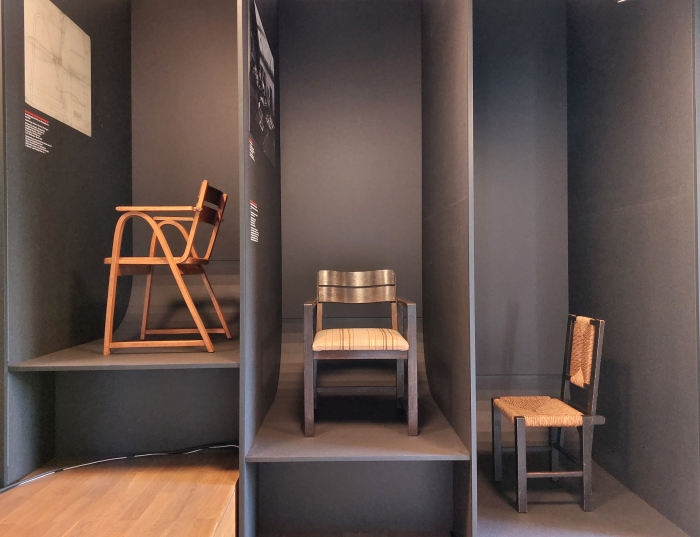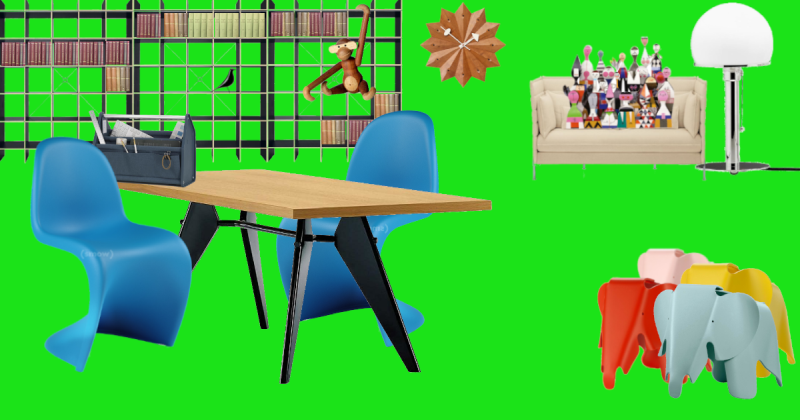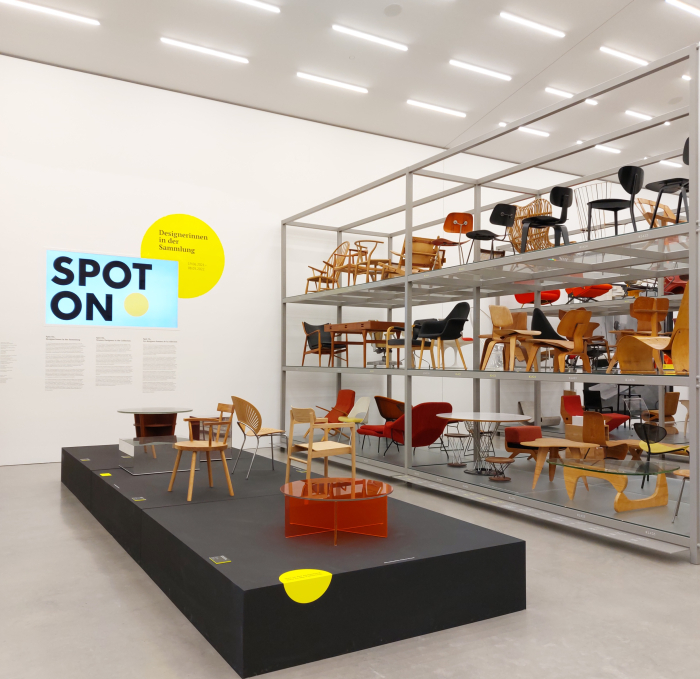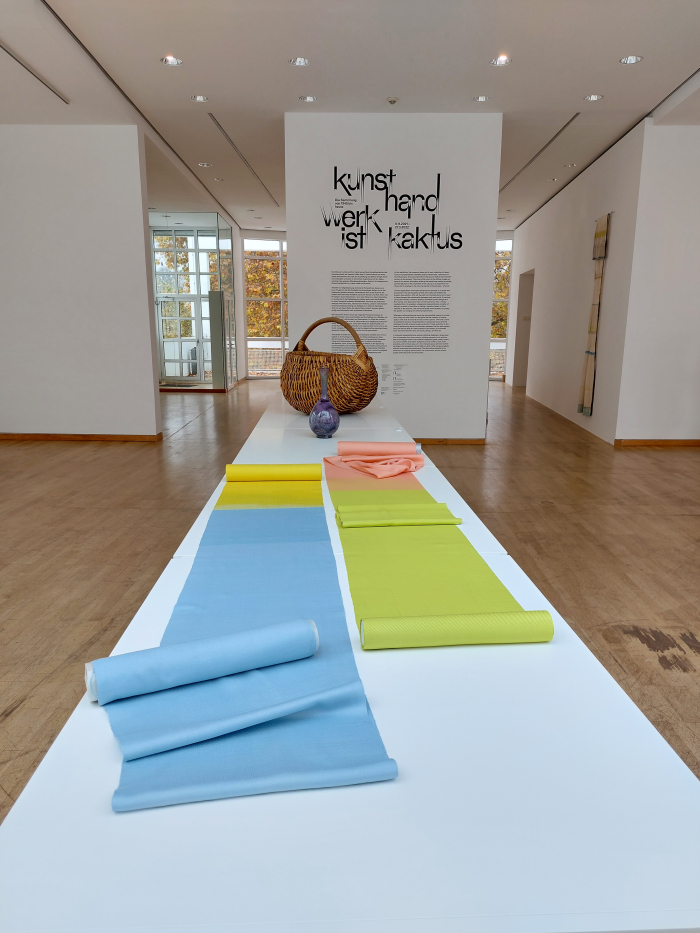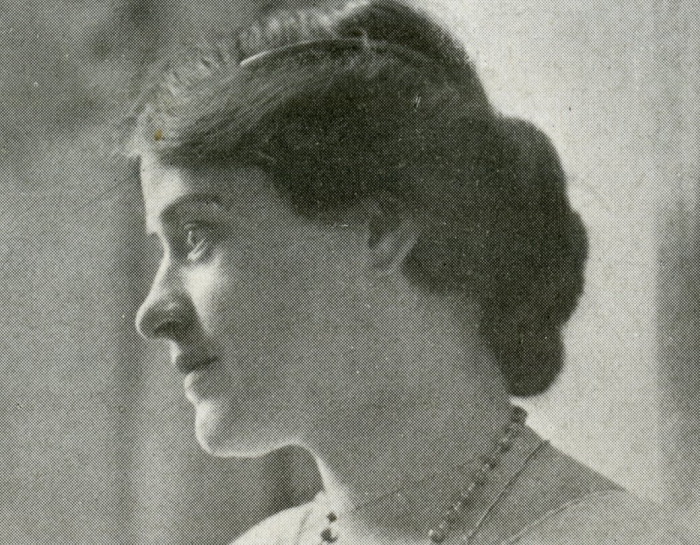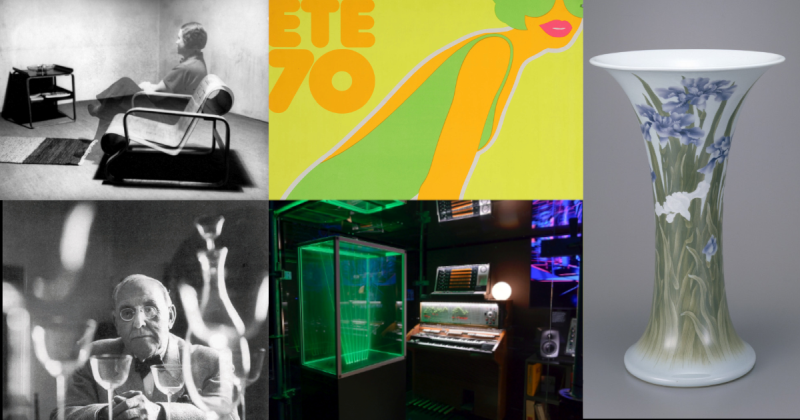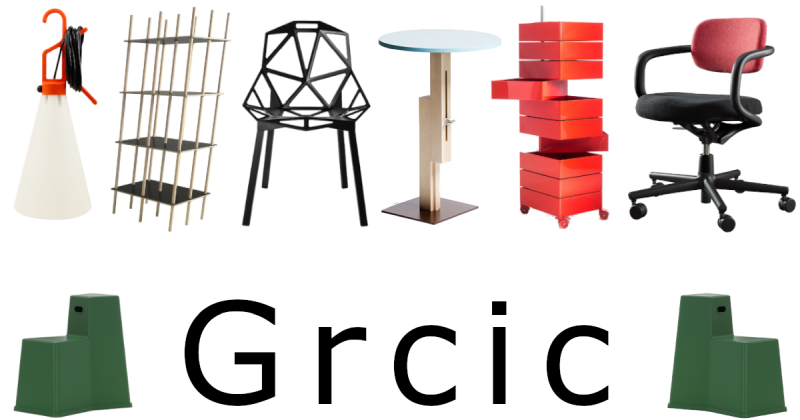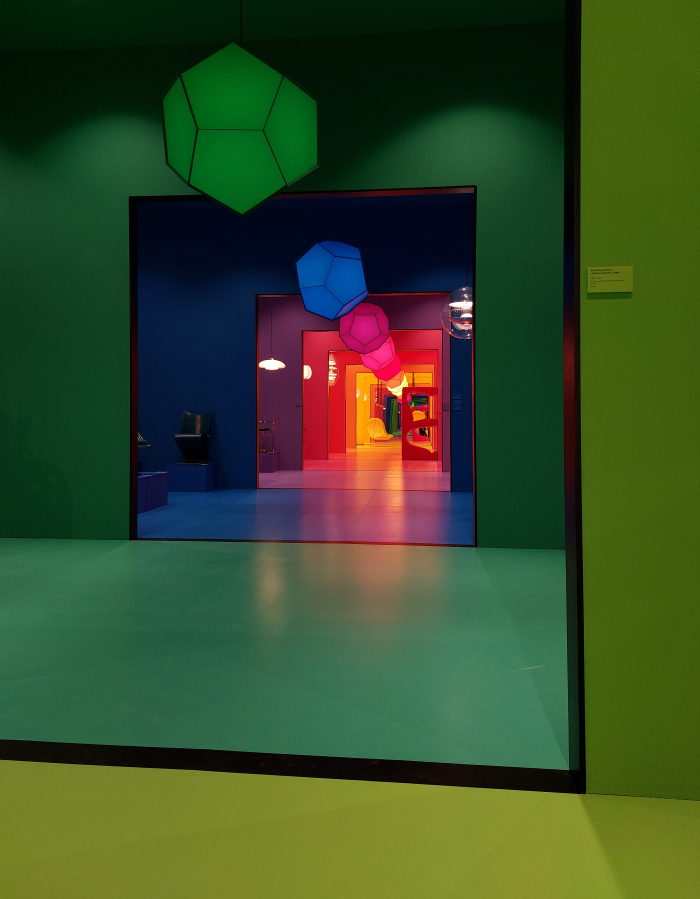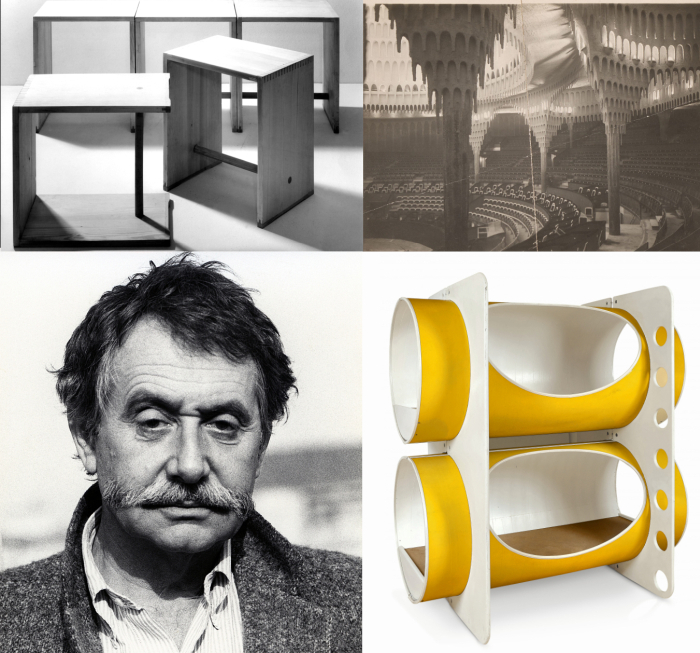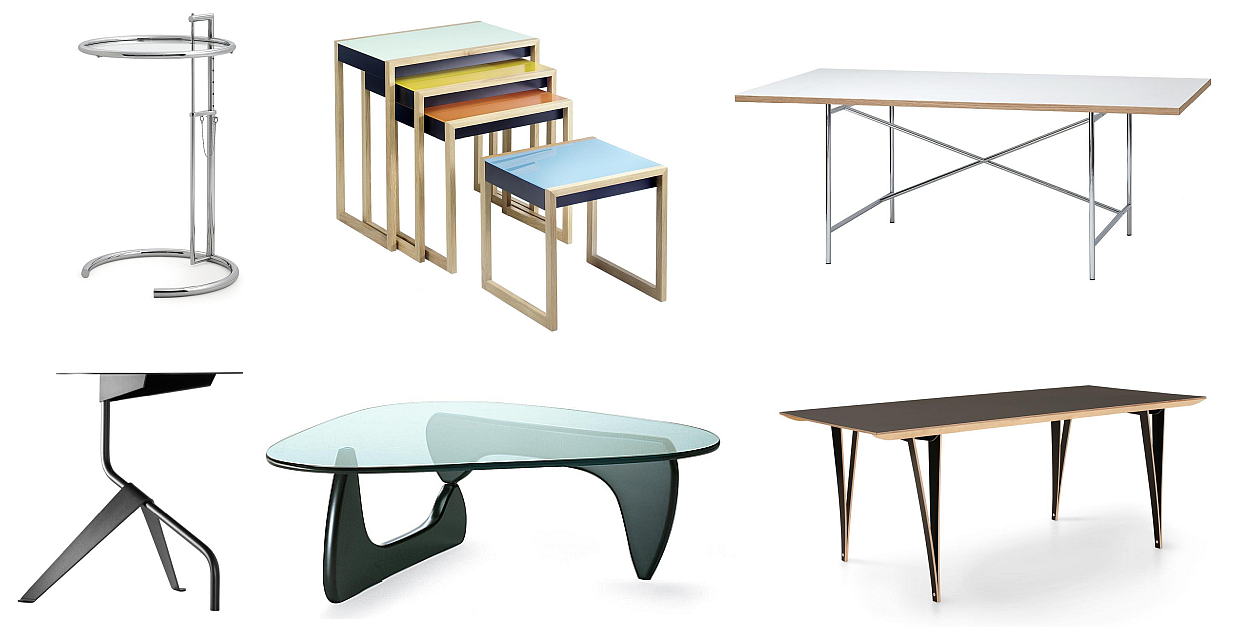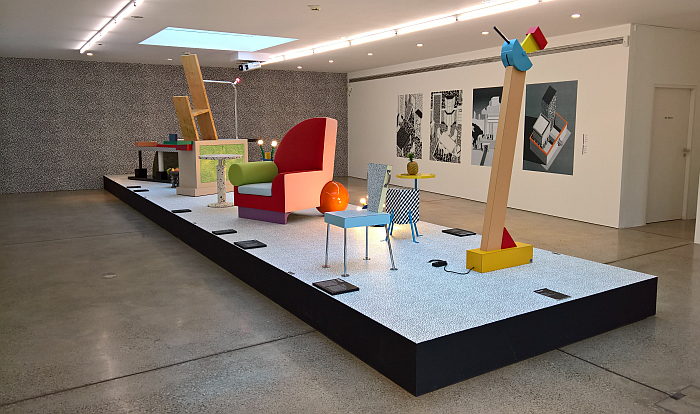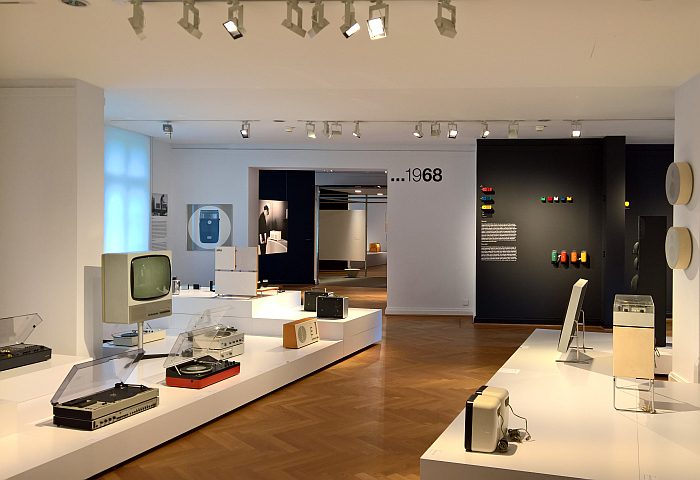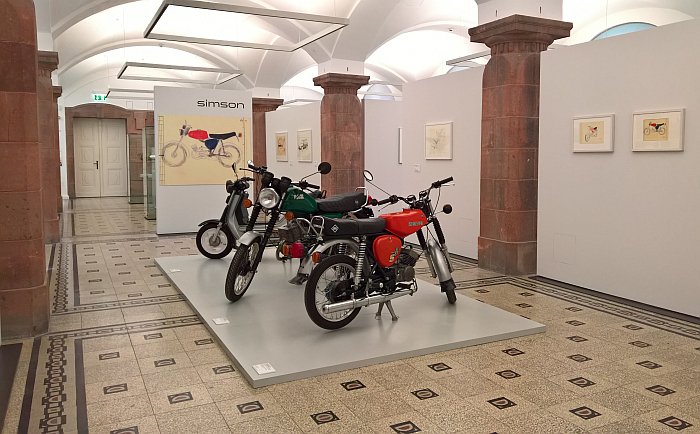Category: Product
#officetour Milestones – A chair “just high enough that one can sit half-standing”
“For men who have to write a lot, and over prolonged periods, a desk at which they can work standing up is an indispensable piece of furniture for altering their posture and for maintaining their health”, opined Journal der Moden in May 1786. An age when, famously, only men wrote.
Yet advantageous and positive as standing to write was, prolonged standing could, as Journal der Moden notes, lead to tiredness.
A solution was however at hand for all who preferred working at a standing height desk over a prolonged period: a chair, “or a so called donkey … on which one sits as if on a saddle, and which must be just high enough that one can sit half-standing…”1
A half-standing sitting solution whose nickname can be readily derived from the proposed sitting position.
And a half-standing sitting solution that for all it is thoroughly familiar today, was novel, one could almost argue revolutionary, and even enlightened, in 1786…….
Mimesis. A Living Design at the Centre Pompidou-Metz
In Poetics Aristotle argues poetry arose on account of two intrinsic human instincts: an “instinct for ‘harmony’ and rhythm” and “the instinct of imitation”, as in representation rather than copying, an imitation Aristotle opines is the method via which humans learn, and that “to learn gives the liveliest pleasure”.
Yet while for Aristotle all forms of poetry are “in their general conception modes of imitation”, again as in representation rather than copying, “they differ, however, from one another in three respects – the medium, the objects, the manner or mode of imitation”.1
With the exhibition Mimesis. A Living Design the Centre Pompidou-Metz explores designers as imitators of nature, and the varying, and continually developing, mediums, objects, and manners or modes of that imitation…….
PRINT3D. Reprint Reality at the CaixaForum, Sevilla
For all that the (hi)story of architecture and design is one staged against a background of economic, social, environmental, cultural, et al evolutions and developments, it is also a (hi)story fundamentally dependent upon developments and evolutions in materials, and also in the development and subsequent evolution of novel technologies. Novel technologies and materials which not only enable new approaches to the construction of our buildings and the manufacturing of our objects of daily use, but also enable new forms which offer the possibility of new functionalities and new relationships; new functionalities and new relationships appropriate for and demanded by the age, appropriate for and demanded by the contemporary economic, social, environmental, cultural, et al realities. And which ultimately allow that age to develop into, segue into, the next.
With PRINT3D. Reprint Reality the CaixaForum, Sevilla, allow space for reflections on the actuality, and future possibilities, of 3D printing, a technology that although it has been around for a few decades is, arguably, only now starting to fully reveal its potential and indicate where and how it could contribute to the future of architecture and design. And thereby contribute to future society…….
Regard! Art and Design by Women 1880–1940 at the Bröhan Museum, Berlin
July 2021 marked what would have been the 100th birthday of Karl H. Bröhan, initiator of the collection that initiated Berlin’s Bröhan Museum; a centenary marked by the museum with the exhibition Bröhan Total!, a, as the title implies, comprehensive presentation of that collection.
A presentation of the Total! Bröhan collection, an intensive examination, and study, of the Total! Bröhan collection by the Bröhan Museum which, indirectly and directly, led the Bröhan Museum to undertake, if one so will, a gender audit of their Total! collection; an audit which came to the conclusion that from the ca. 20,000 objects therein just some 1,500 were by females creatives, or ca. 7.5%. And from the ca. 1100 creatives represented in that collection just some 99 were female, ca. 10%; thus more than the 7.5% of the objects indicating a greater average object per head ratio for male creatives than females.
Numbers which led to questions, not least questions of why, and subsequently led the Bröhan Museum Berlin to the exhibition Regard! Art and Design by Women 1880–1940.
An exhibition which presents works by all 99 female creatives represented in the Bröhan Museum collection, and allows space for your own reflections on the numbers, the biographies, the (hi)story of design, museum collections, and for all the myriad whys. The myriad whys, then and now…….
Wilhelm Wagenfeld A to Z at the Wilhelm Wagenfeld Haus, Bremen
As we all know, the key to reading is learning your ABC. Once you’ve learned the letters, and combined them in simple words, you can approach more complex words, then sentences, paragraphs, essays and finally let that which you read discourse with your observations and experiences to help you better develop your understandings and appreciations of the world around us and those with whom we share it. But can learning the ABC of a designer help us to better approach understandings and appreciations of their work, their relevance, their legacy? With the exhibition Wilhelm Wagenfeld A to Z the Wilhelm Wagenfeld Haus, Bremen, attempt just that, in context of an eminently interesting and informative, if at times very difficult to read, designer…….
Chairs: Dieckmann! The Forgotten Bauhäusler Erich Dieckmann at the Kunstgewerbemuseum, Berlin
Monographic exhibitions portraying designers from ages past, generally, only leave you with but little opportunity to directly assess, compare and contrast that designer in context of their time.
The, desired, concentrated focus on the protagonist leaving you, by necessity, not least by necessity of limits of time and space, primarily relying on those snippets of information and/or blurry images of objects, invariably popularly celebrated objects, your brain can recover in that moment, for any semblance of assessment, comparison and contrast with what others were realising in that period, any semblance of assessment, comparison and contrast with the positions and approaches of others in that period.
Following its run at Neuwerk 11, Halle, the exhibition Chairs: Dieckmann! The Forgotten Bauhäusler Erich Dieckmann is now on display at the Kunstgewerbemuseum Berlin, who have employed their own collection to expanded the Dieckmann presentation with contemporaneous works. To expand the works of Erich Dieckmann with works by The Others…….
The Historia Supellexalis: “K” for Knoll
Knoll
A Wilhelm; A Walter; A Willy; A Hans; A Florence; A Lineage
5 New Architecture & Design Exhibitions for May 2022
“The May of life blooms but once”, reflects Friedrich Schiller, continuing, “It has faded for me”.1
Cheer up Freddie!!!
And there’s nothing quite like a good architecture or design exhibition to revitalise all your faculties.
Our recommended fertilizers for the zest of life in May 2022 can be found in Berlin, Den Haag, Brussels, Pfäffikon SZ and Amsterdam…….
The Historia Supellexalis: “J” for Jongerius
Jongerius
A Hella; A Lab; An Open-ended exploration
Lost Furniture Design Classics: The Gabriella Chair by Gio Ponti for Walter Ponti
“Dear Architect” wrote Maria Chinaglia Ponti in 1967 to the architect, but no relation, Gio Ponti, “why don’t you design us some modern furniture? Daddy Walter is worried because our traditional stuff is not selling as it used to”.1
An unsolicited request, from a company of whom he’d never heard, an architect of the status of a late 1960s Gio Ponti could have turned down, it wasn’t as if a late 1960s Gio Ponti needed the commission; however, something about the letter from Maria Chinaglia Ponti interested, intrigued, Gio Ponti. Beyond the shared surname. For as he continues, in his recounting of the tale, “Ci vado“.
“I went to see them”…….
Chairs: Dieckmann! The Forgotten Bauhäusler Erich Dieckmann at Neuwerk 11, Halle
“…one only finds warmth of life and sincerity where human nature is allowed to flourish”, opined the German designer Erich Dieckmann in 1931, “one shouldn’t forget that in our apartments. Let’s treat our contemporary homes to something humane. Something unelaborate, something provisional, with some leeway and space for things to grow as they wish over time.”1
With the exhibition Chairs: Dieckmann! The Forgotten Bauhäusler Erich Dieckmann, the Kunststiftung des Landes Sachsen-Anhalt and Staatlichen Museen zu Berlin extend an invitation to explore how Erich Dieckmann understood an unelaborate, humane, contemporary apartment full of leeway and space to grow…….
Furnishing the Metaverse…….
We were obviously off ill on the day of the great global public debate about whether, given the myriad problems of contemporary societies, our resource emergencies, and the effortless manner in which we’ve managed to turn the Internet, the greatest tool ever placed at the disposal of a member of the Animalia, into a platform for hate and vanity and greed and crime; if given all that, if we all wanted to, if we all should, move to the Metaverse.
But that debate must have occurred, for the decision has been made; and ever since global society decided of its own free will that we should all move to the Metaverse those Californians who hope to reap billions of dollars from our presence there, can’t stop extolling just how utterly brilliant it’s all going to be.
Which means that slowly we do all need to start reflecting on our furniture for the Metaverse, start considering how we’re going to furnish the Metaverse once we get there……
Spot On: Women Designers in the Collection at the Vitra Design Museum Schaudepot, Weil am Rhein
The popular (hi)story of furniture design is, no-one could argue, a very male (hi)story.1
Which doesn’t mean that furniture design is a profession at which males excel more than females, a profession for which males have a natural affinity above and beyond that of females, that females’ natural domains are textiles and colours; much more is because that popular (hi)story of furniture design contains flaws, biases, inaccuracies and under-illuminated corners.
A great many of which can be traced back to those institutions charged with recording, documenting and mediating the (hi)story of furniture design, who are responsible for nurturing and validating the popular narrative of the (hi)story of furniture design.
With the project Spot On: Women Designers in the Collection the Vitra Design Museum Schaudepot shine a critical spotlight into some of the under-illuminated corners of their own collection…….
Craft is Cactus. The Collection from 1945 to Today at the Museum Angewandte Kunst, Frankfurt
The contemporary systematics of the family Cactaceae recognises four subfamilies, Cactoideae, Maihuenioideae, Opuntioideae and Pereskioideae; is however a classification very much in motion, one very much in an ongoing process of re-evaluation, re-definition, re-assessment, one which undergoes regular revisions.
¿An ongoing re-evaluation and re-definition and re-assessment and revision which could see the addition of a fifth subfamily, the Craftoideae?
With the exhibition Craft is Cactus. The Collection from 1945 to Today the Museum Angewandte Kunst, Frankfurt, explore contemporary craft in its myriad expressions, positions and relationships, and in doing so also undertake an appraisal of the contemporary taxonomy of our objects of daily use…….
smow Blog Design Calendar: January 10th 1875 – Happy Birthday Louise Brigham!
“Boxing is not an exclusively athletic term in these practical and utilitarian days”, noted John Crocker in 1913, rather, “the making of useful and ornamental things for the home, from the boxes, that in other days adorned the rear of stores, is the nucleus of armament that has made “boxing” a pursuit that contains both amusement and substantial results.”1
And nobody contributed more to promoting and advancing the amusement and substantial results of the practical and utilitarian craft of domestic boxing than Louise Brigham.
A contribution that for all it may have been little recognised in recent decades remains as informative and instructive in the early 21st century as it was in the early 20th century…….
The Ulmer Hocker: Idea ─ Icon ─ Idol at the HfG-Archiv, Ulm
1 x rounded piece of beech, 2 x quadratic pieces of beech, 3 x quadratic pieces of spruce…
1, 2, 3… An Ulmer Hocker1
With the exhibition The Ulmer Hocker: Idea ─ Icon ─ Idol the HfG-Archiv, Ulm, help elucidate that while an Ulmer Hocker is that simple, it is a deceptive, and highly informative, simplicity…….
5 New Architecture & Design Exhibitions for December 2021
In 1922 the Scottish novelist J.M. Barrie told the undergraduates at St. Andrews University “you remember someone said that God gave us memory so that we might have roses in December”, an allusion to the summer of your life filling your darkening winter days with colour and aroma, and an analogy he neatly reinforces a little later with a, “you have June coming”.1
But that was 1922. Roses were seasonal. Today roses are available all year round, which is not only symbolic of the short-sighted idiocy with which we’re intent on destroying our planet, but also means the rose has been reduced from a metaphor that can be so poignantly and joyously employed as Barrie did, to a cheap, stereotypical, derivative trope devoid of real meaning.
Not that a century later we can’t all do things to ensure that as we progress down life’s highway, as we all approach our own, personal, December, we do so with our emotional and mental capacities fully stimulated and finely honed. Amongst the most rewarding method of which is the regular visit to architecture or design exhibitions: spaces, experiences, whose intellectual and cultural stimulation and nourishment mean that it can be forever June.
Our five new Junes blooming forth in the non-metaphoric December 2021, can be found in Vienna, New York, Düsseldorf, Kanazawa and Paris.
And as ever in these times, if you are planning visiting any exhibition please familiarise yourself in advance with the current ticketing, entry, safety, hygiene, cloakroom, etc rules and systems. And during your visit please stay safe, stay responsible, and above all, stay curious……
Verner Panton – Colouring a New World at Trapholt, Kolding
“Space and form are important elements in the creation of the [interior] environment”, opined the Danish architect, artist and designer Verner Panton in 1969, however, he continues, “colours are even more important”.
And no-one, even those with but the briefest familiarity with Verner Panton, can oversee the colour in Verner Panton’s work.
Yet important as colour and space and form were for Panton, “in the creation of the [interior] environment”, “l’homme reste l’élément central“, man remains the central element.1
With the exhibition Verner Panton – Colouring a New World, Trapholt, Kolding, undertake a search for the human in the colourful new world of Verner Panton.
5 New Architecture & Design Exhibitions for October 2021
In days of yore October was known in Germanic lands as Weinmonat, Wine Month, Month of Wine, whereby thoughts were, unquestionably, less with the drink as with the grape and the harvest, and thus the promise of the new wine.
And in many regards our exhibition recommendations can be considered a monthly harvest of the new crop of architecture and design exhibitions; specifically, and staying in Germanic registers, an Auslese, a considered selection of those well ripened concepts and premises it is hoped will most excite an invigorate the palate both experienced and novice. Or the viewer, experienced or novice.
Our quintet of, possible, new, memorable vintages from Weinmonat 2021 can be found in Ulm, Stockholm, ’s-Hertogenbosch, Paris and Tokyo…….
Radio smow: A Tables Playlist…….
Of all the genres of furniture which accompany global society, none, arguably, is more self-explanatory, more obvious, than the table.
Yet for all the simplicity, or perhaps exactly because of all the simplicity, the table is, arguably, the most versatile of all the genres of furniture which accompany global society; the contemporary table existing as it does in a myriad forms and contexts.
And not just physical forms and contexts………
Memphis: 40 Years of Kitsch and Elegance at the Vitra Design Museum Gallery, Weil am Rhein
Much as with “Bauhaus”, “Memphis” is all too often popularly reduced to a “style”, something one can “recreate”.
As with “Bauhaus” that it is not only disingenuous, and erroneous, but hinders development of understandings of the (hi)story of design, understandings of the path taken to our contemporary design that are important for considerations on where we are and how best to progress.
With the showcase Memphis: 40 Years of Kitsch and Elegance the Vitra Design Museum Gallery issue an invitation for us all to delve a little deeper, to look below the plastic laminated surface.
Braun 100 at the Bröhan-Museum, Berlin
Braun occupy a special, ¿unique?, position not only in the mythology of product design but also in the (hi)story of West Germany; arguably no brand is as closely related with and to West Germany as Braun.
With the exhibition Braun 100 the Bröhan-Museum, Berlin, explore the development of design at Braun in the post-War decades and in doing so help one approach differentiated understandings of not only Braun and Braun design, but also of the relationships between Braun, design and West Germany…….
Simson, Diamant, Erika. Formgestaltung von Karl Clauss Dietel at the Kunstsammlungen Chemnitz
“In his work the designer seeks to find the constancy of the good”, wrote Karl Clauss Dietel in 1973, a lightly articulated yet not so straightforward task for, as he continues, not only is the assessment of such dependent on a myriad varying factors, but “the search for what defines design, what it grows from, where it comes from and where it wants to go, takes on new dimensions against the background of our cultural upheaval”.1
With the exhibition Simson, Diamant, Erika. Formgestaltung von Karl Clauss Dietel the Kunstsammlungen Chemnitz allow insights into not only how Karl Clauss Dietel understood “what defines design, what it grows from, where it comes from and where it wants to go” but how those understandings aided and abetted him in his own search for, understanding of, “the constancy of the good”…….
